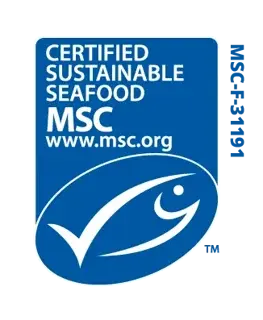One Of The Most Sustainable Fisheries In The World
It's All About Sustainability
Antarctic krill is considered one of the most environmental sources of marine omega-3s – but only if harvesting maintains the long-term sustainability of the Southern Ocean’s ecosystem and protects all Antarctic species.
That’s why, even before we deployed our very first fishing net in the Southern Ocean, we reached out to WWF-Norway to ensure that our fishing operations would have as little impact as possible on the Antarctic ecosystem.
Now, Aker QRILL Company krill fishery is rated as the world's most sustainable reduction fishery, being the only one to receive an 'A' rating from the Sustainable Fisheries Partnership.
Overcoming the global challenges that will impact — and drive — the future of our business, such as loss of biodiversity, resource scarcity, lifestyle disease threats, and climate change, are essential goals for us.

The First MSC-Certified Krill Supplier
MSC certification guarantees that the marine resources are harvested using sustainable methods and that all products are traceable throughout the supply chain. These fisheries and manufacturers are audited by independent, third-party evaluators before they are MSC certified. This means our fishery meets the most stringent sustainability standards.
.webp)
Eco-Harvesting
Aker QRILL Company has developed and patented Eco-Harvesting technology. This innovative technique helps us to harvest krill in a sustainable and environmentally friendly way. It does that by reducing the risk of by-catch of other species to almost zero.
.webp)
'A' Rating Fishery
For the fifth year in a row, the Aker QRILL Company Antarctic krill fishery received an “A” rating for its well-managed fishery from the Sustainable Fisheries Partnership (SFP). The report ”Sustainability overview” of reduction fisheries states the fish stocks are listed in “very good condition,” and the krill fishery in the Atlantic Southern Ocean is once again singled out as being particularly well-managed.
.webp)
AWR Partners
Ongoing research is essential for effective Antarctic Krill fishery management. That is why Aker QRILL Company partnered with the Antarctic and Southern Ocean Coalition (ASOC) and WWF-Norway in 2015 to establish a new research fund. Research on the ecosystem in which we fish is essential to our business, our customers, the scientific community and environmental protection organizations.
CCAMLR
The Antarctic Krill Fishery is managed and regulated by the Commission for the Conservation of Antarctic Marine Living Resources (CCAMLR). It operates only within a small area of the Southern Ocean, called Area 48. Within this area, the CCAMLR has set a catch quota of 1% of the total biomass which makes it one of the most precautionary in the world.
Currently, the annual krill catch is < 1% of the unexploited krill biomass, which is estimated to be 62.6 million tonnes in the commercial fishing region, Area 48. This is below the precautionary catch limit of 5.6 million tonnes set by CCAMLR. The management of the fishery is very stable, as the consensus of 28 nations is needed to change any of the fishery regulations in the Antarctic.
Setting A New Benchmark For Traceability
By controlling the entire supply chain, from harvesting krill and throughout our production, we are able to guarantee the highest level of quality for our krill-derived products.
Customers and end-users can rely on our ability to trace all products back to the exact location at which the krill was caught, as recorded by the sophisticated GPS system onboard our modern factory trawlers.
The Sustainability Of The Antarctic Krill Fishery
Protect our oceans and ecosystems by choosing our marine ingredients sourced from a sustainable fishery.

